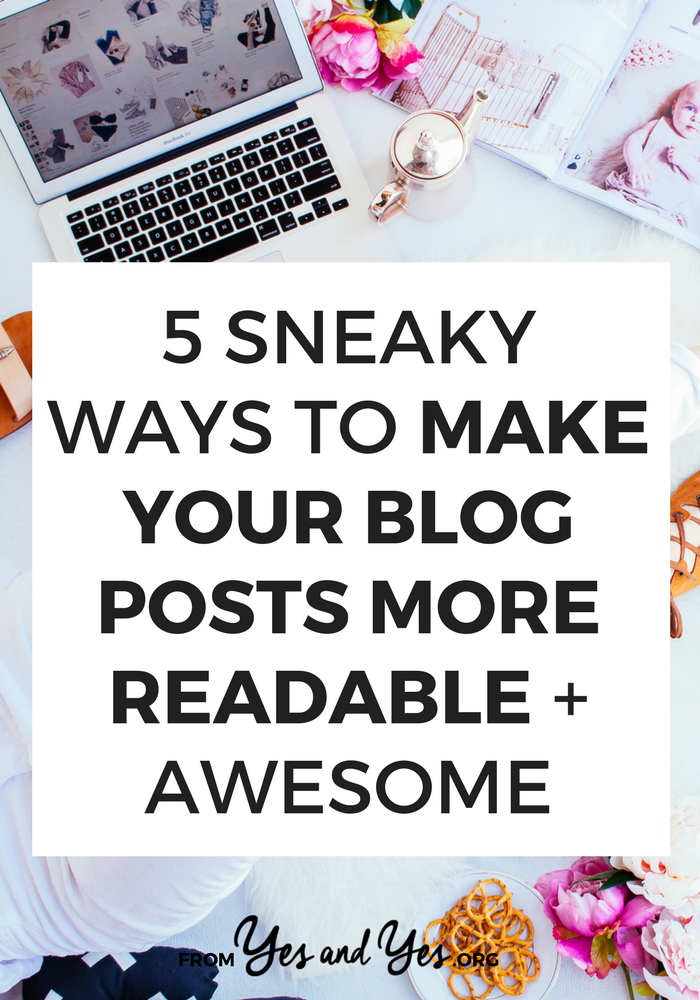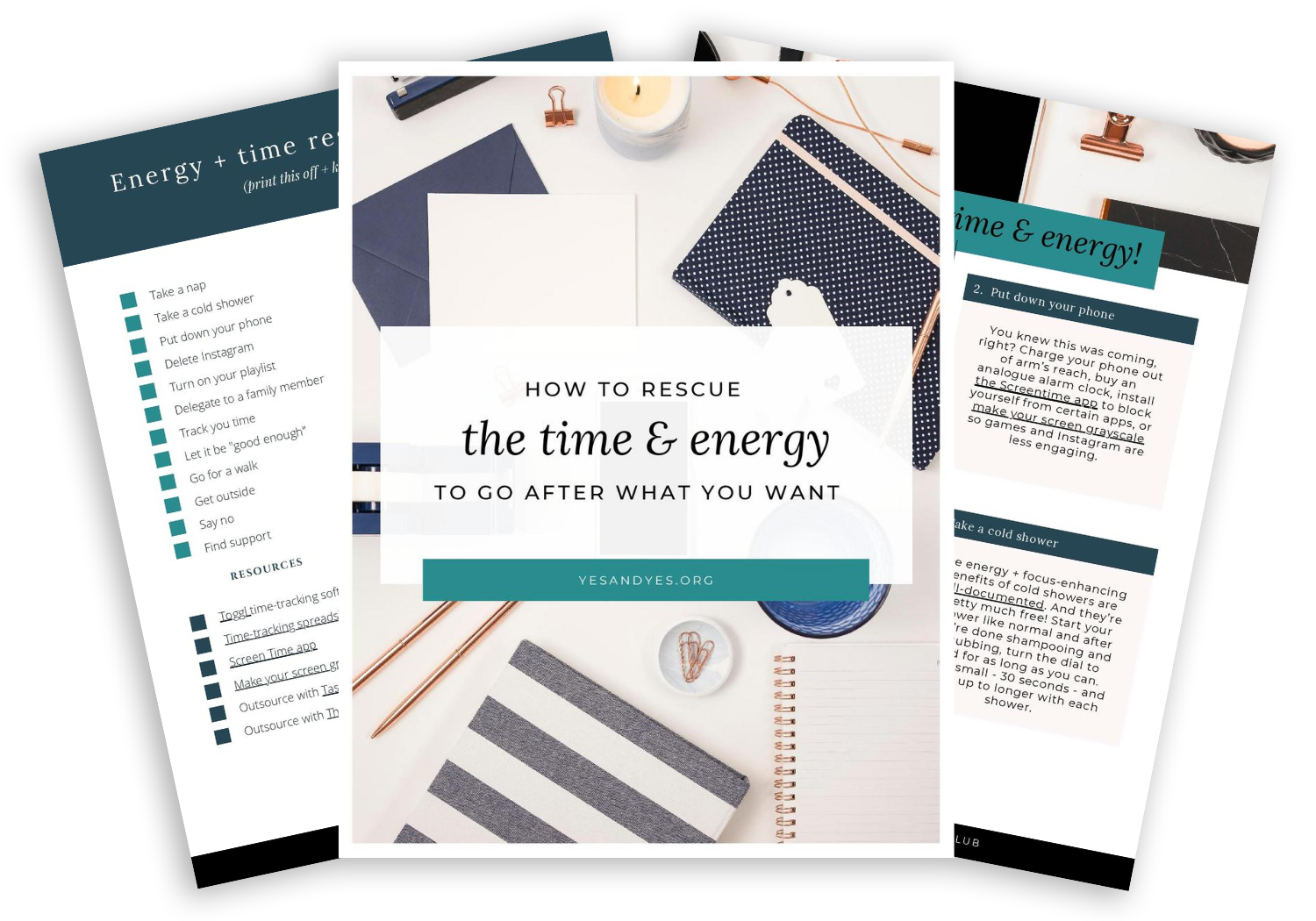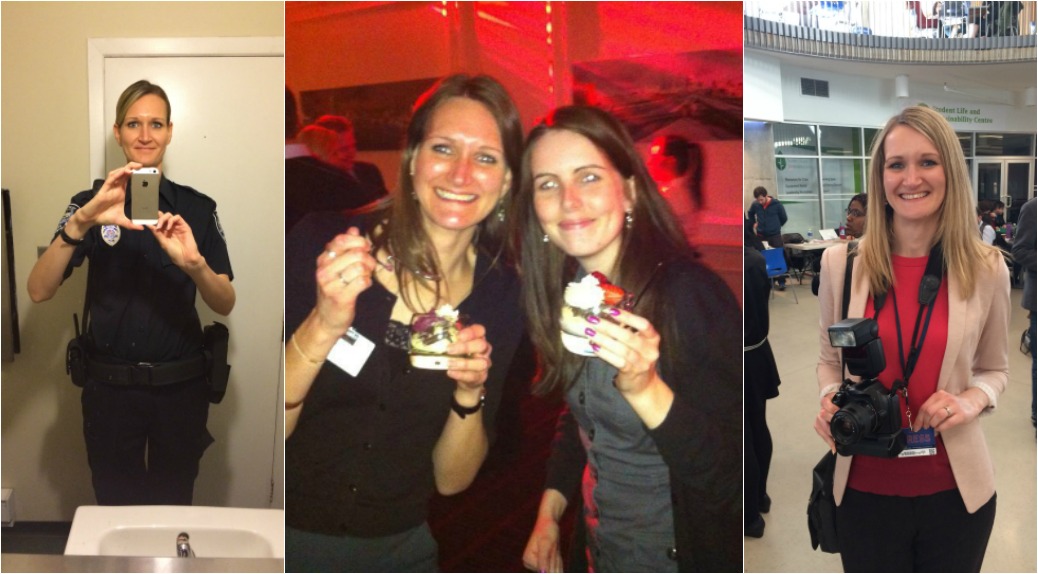
I had really great intentions when I clicked on the quippy, clever link to that blog post. I meant to pore over it like a Steinbeck novel, rolling each adjective around on my tongue/mind. I was planning to nod along, take notes, learn something. Maybe click that ‘share’ button at the bottom.
But then it was boring and poorly formatted so I didn’t.
Buuuuuuuurn! The harsh truth is people who read things on the internet (like you and me) have short attention spans and wondering eyes. We like our writing in bite-size pieces with bullet points and reaction gifs, plz.
The good news is, it’s not hard to make your blog posts more readable! In fact, it might even make your writing process easier!
5 ways to make your blog posts more readable
1. Use headings
Have you ever clicked on a headline like ‘5 Ways To Wildly Improve Every Aspect Of Your Life!!!” only to find that a-hole of a writer HAD THE AUDACITY TO NOT USE HEADINGS OR NUMBERS????!!! Like, they want you to dig through a 3,000-word blog post and tease out those takeaways?
As a former English teacher, I could pull out my soapbox here and lecture on the importance of long-form writing and reading comprehension and blah blah blah whatever. Those things are really important! But that’s why we read The New Yorker. It’s not why we read Buzzfeed.
When we use headings, we’re making our content easier to read. When it’s easier to read, people are more likely to learn from it, leave comments, and share it. Bonus: using headings (specifically H2 and H3-size headings) is good for SEO!
2. Make your sentences shorter
Some of my favorite writers use long, rambling, hilarious sentences. I can be 150 words into David Sedaris’s litter-picking obsession before I notice that it’s all one sentence.
Friends, most of us aren’t David Sedaris. And very few of our readers are interested in sentences that are 75 words long. Rather depressingly, the most read, most shared content on the internet is written at a sixth grade reading level.
But you don’t have to remove all the unusual adjectives from your writing! Just make your sentences shorter! I love the Hemingway App for this.
3. Start with an anecdote
Have you ever noticed how good writing starts with a fascinating, set-the-scene bit? “He’d already burned his prison jumpsuit and secured a new driver’s licence. He’d put back on his finger the wedding ring he wasn’t allowed to wear in prison, the ring his wife gave him before they said he murdered her and their children.”
In journalism, those interesting intros are called ‘ledes’ and you can use them to get people interested in your writing – no matter the topic. A good lede can intrigue-i-fy a blog post about insurance rates, Google analytics, or cheese types. <- JK cheese types are fascinating and I don’t need a good lede to read about that ish.
So when you’re writing about something that’s dry-ish, think about how you can introduce this topic in a way that’s personal and engaging. What was going on in your life when you had this epiphany? Did a conversation with a friend inspire this blog post? Tell us about it!
You can see how I’ve done this here, here, and here.
Related: Here’s a whole tumblr devoted to amazing ledes.
4. Write in first person
We buy things and read things by people we know, like, and trust. It’s much easier to know, like, and trust you if you use the word ‘I.’ This topic you’re writing about – why are you interested in it? How have these suggestions benefited your life? What mistakes did you make on your way to learning these things?
This is also an easy way to add personality to your work if you’re not keen to share photos of your children, monthly income reports, or every single aspect of your life with your readers.
Related: How To Add Fascinating, Engaging Personality To Your Blog
5. Intersperse photos and screen shots
Did you know the ‘best’ length for blog posts is 2,500+ words? That’s looooooong. Break up those big blocks of text with headings, white space, and photos that illustrate your point. If you’re doing a tutorial, include photos of each step or screenshots of each part of the process. You can see a great example of helpful screenshots here.
But I want to hear from you! When you’re reading online, what makes you read a post from beginning to end? What makes you click the ‘back’ button? Tell us in the comments so we can make our posts more readable!
P.S. Everything I use + recommend to run my business













Love the tips! I need to start my posts with anecdotes more often. The other points, though, I usually use for all my blog posts anyway. I think writing in shorter sentences is especially helpful!
Charmaine Ng | Architecture & Lifestyle Blog
http://charmainenyw.com
Text that is too small or too hard to read will ALWAYS make click that back button!
You have a great list here! The only thing I can think to mention is to make your links a different colour to help make content more readable. And it helps readers learn more about the areas that interest them.
Using headings is not only helpful to make a blog post more readable, it also helps me when I’m outlining the blog post. It makes the writing process much easier!
Great tips as always Sarah – thanks! For me, the quality of the writing mainly determines if I keep reading. Like, if I can tell the writer has been thoughtful about the ideas on the page, and they’re well-expressed, I’ll read all the way through. (Hard writing makes easy reading ?)
Nice: “Hard writing makes easy reading ?”
Helpful tips for newbie bloggers, I help new holistic women get their website up to part especially via SEO, so the writing is key. I”ll pass this article on to any clients that need clear, straightforward guidance for their writing! Thanks.
Accessibility is a big deal for me. I’m hard-of-hearing thanks to a metal allergy that resulted in a nasty ear infection during my childhood. ? If there is only audio to a post, I’m gone. If I’m super passionate about the content, I’ll ask for a transcript, but more often than not there is none available and won’t be anytime soon—and when they try to pitch me to another inaccessible product or something after saying they haven’t accessibility resources available to me, I’m gone for good. I’m not interested in wasting my time on websites who see accessibility as only necessary and dependent on convenience. ?
(Sucks for them, ’cause I’m one of those super loyal clients who throws money and referrals at peeps and companies. Tsk, tsk.)
I also need something to be of extreme value, or highly relatable in order for me to be able to interact with it. I like your meta blog posts, because you’re always open to feedback and suggestions on them. Welcoming others’ input makes you seem less like you put yourself on a pedestal and more like you’re interested in growing together. I admire that more than when bloggers don’t welcome others’ input because “they” are the only expert. It reinforces the idea (and fact) of the blogging community being a community that grows together, not against each other. ❤
I have to make everything accessible for work (section 508 for the federal government!), so it’s always nice to hear when it is actually useful for people. Thank you for reminding people that not everyone has the same needs.
Great post, Sarah. Thank you. I will read a post that shares about the writer, and one that contains humour and/or vulnerability. Showing people you are human and subject to the same challenges they are is a good way to encourage them to read on.
First sentence.. pour** 😉
Actually, no. It’s pore. 🙂
I read a post from beginning to end when I find it easy to read, entertaining, funny, and applicable to my life. Great tips that I will be incorporating into my own blog posts. I can’t even imagine a 150 word sentence, that’s NUTS!!!
Keep up the awesome sauce, Sarah!
Fonts are also a plus factor for me. I can actually read an all-text (no photo) article online, provided they are large enough for reading.
I brought this up because there are blogs that use tiny and thin fonts. I don’t know. I think this is just personal preference.